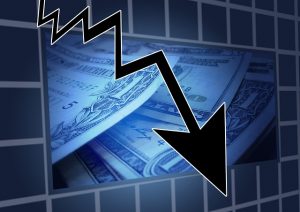How Trouble Overseas Could Impact Australian Real Estate
 As we learned in 2007, the Australian property market is not immune to economic shockwaves from overseas. In the midst of the Global Financial Crisis (GFC), auction clearance rates across the combined capital cities fell as low as 42 percent. While some markets flattened, home values in other markets took hits of 10 percent or more.
As we learned in 2007, the Australian property market is not immune to economic shockwaves from overseas. In the midst of the Global Financial Crisis (GFC), auction clearance rates across the combined capital cities fell as low as 42 percent. While some markets flattened, home values in other markets took hits of 10 percent or more.
At the time, I was in the middle of a small development deal in regional Victoria. I had hoped to sell this property quickly after completion, but I ended up having to hold it for 12 months. I was finally able to sell after dropping the price, and in the end, was happy to break even. Others in the area who were developing higher end properties didn’t fare so well. Some lost hundreds of thousands.
Thanks to China’s rapid growth, our mining boom insulated most investors from the worst of the GFC. Running a budget surplus, our government announced a massive stimulus program, guaranteeing bank deposits and throwing money to first homebuyers. The RBA began slashing interest rates. Without those three factors, things would have been quite ugly in our property market.
Perhaps ugly was what we needed, but I digress.
Why Australian Real Estate Took a Hit in the GFC
Last month, I wrote an article titled, “The Ultimate Reason Real Estate is So Expensive.” I made a case for my view that supply and demand are secondary factors to property values, and that the primary culprit is our access to cheap credit.
 If you take away the flow of finance, no matter how many Australians want to buy, they’ll never be able to afford today’s prices.
If you take away the flow of finance, no matter how many Australians want to buy, they’ll never be able to afford today’s prices.
This fact was illustrated for us back in 2007 as the GFC set in. While the investor market did become much more cautious and less inclined to buy, this drop in demand was only a secondary factor. Ultimately, the slowdown in property here was due to the ripple effect of a credit crunch in the United States.
Banks all over the world were freaking out about the sub-prime mortgage crisis in the U.S. Subsequently, these banks became much less willing to lend to one another, which meant there was less money available to lend out in the form of mortgages. Banks began to hoard cash in an attempt to lower their exposure to risk.
Until things smoothed out in the credit markets, would-be home buyers struggled to get loans.
History is a good teacher. The slowdown in our real estate market amidst the GFC illustrates the greatest risk to property investors in Australia today. While Chinese demand, population growth and the under-supply of housing are important to consider, they are secondary. Ultimately, our greatest threat is trouble overseas that could slow down the flow of cheap credit.
Understanding The Wholesale Lending Market
It’s important to understand where banks get their money to lend to homebuyers. The obvious answer is deposits. Banks hold about one percent of the cash we deposit, and they loan out the other 99 percent.
Deposits are the preferred and least expensive source of funding for mortgage lenders. But in today’s low interest rate environment, there’s not a lot of cash flooding into banks.
 Rather than depositing their savings into banks, investors are seeking greater returns elsewhere. While the RBA’s low cash rate has decreased the supply of deposits, it has increased the demand for credit.
Rather than depositing their savings into banks, investors are seeking greater returns elsewhere. While the RBA’s low cash rate has decreased the supply of deposits, it has increased the demand for credit.
When the demand for credit exceeds the supply of deposits, banks must look elsewhere for money to loan out. They solve this liquidity problem in the wholesale lending market.
In the wholesale lending market, banks borrow money from other banks and lending institutions. As long as these funds are available at a lower interest cost than what the bank charges a homebuyer, then the bank can make a profit and the credit market functions efficiently.
If this money becomes more expensive or harder to borrow, or other factors impact this flow of credit, the supply of funds to homebuyers in the form of mortgages can dry up. And because access to cheap credit is the primary reason real estate is so expensive, you can guess what would happen next.
Three Overseas Risks Investors Should Watch Out For
Here are three areas where trouble overseas could negatively impact the wholesale lending market, and subsequently bring down real estate values:
1. Australia’s Economic Dependence on China
Wholesale lenders treat banks with the same scrutiny that banks treat you. If a bank represents a significant credit risk to a wholesale lender, that lender may not be willing to lend to that bank. Instead, they will look elsewhere for more attractive borrowers.
Australian banks have been attractive borrowers for wholesale lenders in the United States and Europe, in part, because of our economic relationship with China. But with China slowing down, and demand for iron ore diminishing rapidly, Aussie banks may soon represent a greater credit risk than wholesale lenders are willing to carry.
 In a recent interview with News.com.au, Lindsay David of LF Economics said he believes Australia’s export commodities have further to fall, which could impact our access to credit.
In a recent interview with News.com.au, Lindsay David of LF Economics said he believes Australia’s export commodities have further to fall, which could impact our access to credit.
“Real estate prices in Australia depend more on what some wholesale lender in New York or London is willing to lend than anything else…house prices in Australia are dependent on debt growth, and if there’s no credit out there, house prices will begin to fall.”
If China’s woes lead to more miners closing up shop this year, you can expect our credit market to feel the pinch.
2. A Resurgence in U.S. Sub-Prime Lending
While the regulations introduced amidst the GFC have kept many U.S. banks out of subprime mortgages, there’s still plenty of demand from borrowers with less than stellar credit. This has left the door open for non-bank lenders to enter the market. The Wall Street Journal recently wrote a piece on this rising trend.
Of course, these lenders are quick to extol all of the reasons why their practices are different and could never lead to another crisis. But history has taught us that bottom-feeding lenders will always try to push the boundaries of loan serviceability.
Whether this subprime lending will get out of control as it did in 2007 is yet to be seen. But if the trend continues, the risk of defaults and a subsequent credit crunch will grow.
3. A Bursting Bond Bubble
In a recent interview with Bloomberg, former Federal Reserve chairman Alan Greenspan warned that the bond market is now in bubble territory.
He believes that the price of bonds relative to their low yields is at an “extraordinary unstable position,” and that “we should be concerned.”
 Investing in sovereign bonds is considered by most people to be low-risk. As a result, investors in bonds are willing to accept low returns. But there’s always a limit. If a bond issuer’s credit rating becomes questionable or if interest rates rise in the broader economy, bond investors will demand higher yields.
Investing in sovereign bonds is considered by most people to be low-risk. As a result, investors in bonds are willing to accept low returns. But there’s always a limit. If a bond issuer’s credit rating becomes questionable or if interest rates rise in the broader economy, bond investors will demand higher yields.
If interest rates were to rise sooner or faster than expected, bond prices would plummet. Investors would no longer be willing to get paid so little for an asset that costs so much relative to its risk. As with any bursting bubble, massive amounts of capital could be lost in an instant.
Virtually all lenders use bonds at some level as a store of wealth. If these capital hoards diminish in value, this will impact the capital requirements of lenders, and subsequently the amount of funds they have available to lend. The wholesale lending market could dry up quickly amidst a crisis in bonds.
According to an article in The Telegraph earlier this year, the European Banking Authority estimates that the average large European lender has 27 times more debt than it has equity. This means that if their bond holdings turn out to be worth just 3.7 percent less than assumed, it would be lights out for these banks. The domino effect in the markets could be catastrophic.
Even over the past few weeks, we’ve seen signs that investors are no longer looking to bonds as a safe haven. Typically when the share market takes a hit, “risk-free” Treasury bonds are a go-to store of wealth. But investor mindset is shifting. As the Financial Review reports, despite the huge volatility in global markets, U.S. bonds suffered their biggest weekly price drop in two months.
That first domino is looking a little wobbly.
What Do You Think?
 Back in 2008, our booming raw material exports, a strong budget surplus and the RBA’s easing policies saved the day. Today things are different. The mining boom is over, our national debt is approaching half a trillion dollars and central bankers are running low on ammunition.
Back in 2008, our booming raw material exports, a strong budget surplus and the RBA’s easing policies saved the day. Today things are different. The mining boom is over, our national debt is approaching half a trillion dollars and central bankers are running low on ammunition.
Will our dependence on China, subprime lending or overvalued bonds lead to the “mother of all corrections” in Australian real estate? Or are we on the cusp of further growth in the property market?
Can you see any other risk factors around the world that may threaten our economic prosperity?
Share your thoughts in the comment section below.
Comments
Got something to say? Post a comment...
You must be logged in to post a comment.





Good article. We are seeing recession coming in 2016. It is safer to wait and watch now and save money to buy on discounted property later
Sounds like sound advice for anyone with a buy and hold strategy.
Thank you Jason for this article. I have an ‘itchy buying finger’ and need reminding to bide my time till the buying is better.
I believe there’s still money to be made through quick cash deals, but this requires a higher level of sophistication, and thus education.
Thank you for the clear and concise article. On your number 1 issue, the dependence of Australian banks on the international wholesale market, I have a question. The A$ has dropped quite considerably in the last year and appears to be set to continue the decline. How do Australian banks factor in this decline, as international debt servicing has become much more expensive in A$ terms, by up to 40% vs the US$ in the last two years? Grateful for information on this.
Banks use derivatives called currency swaps to hedge their currency risk. It’s quite complex, but it essentially guarantees a fixed exchange rate determined from the start of the contract. The RBA has written more about this than you probably care to know: http://www.rba.gov.au/publications/bulletin/2013/jun/7.html. If you really want to get freaked out about the fragility of the world economy, google “derivative counterparty risk.”
Great article Jason – as always. I have concerns about the international political situation and economy . There is a lot going on at different levels. Its impact on Australia is not fully known at present. I think that we are probably headed for recession in late 2015 / early 2016. My view ( for whatever it is worth ) is to pay down debt now , and wait till 2016 until the dust settles a bit , and then think about re-investing in property.
Thanks Chris. Sounds like wisdom to me. As Rutherford B. Hayes said, “It is the debtor that is ruined by hard times.”